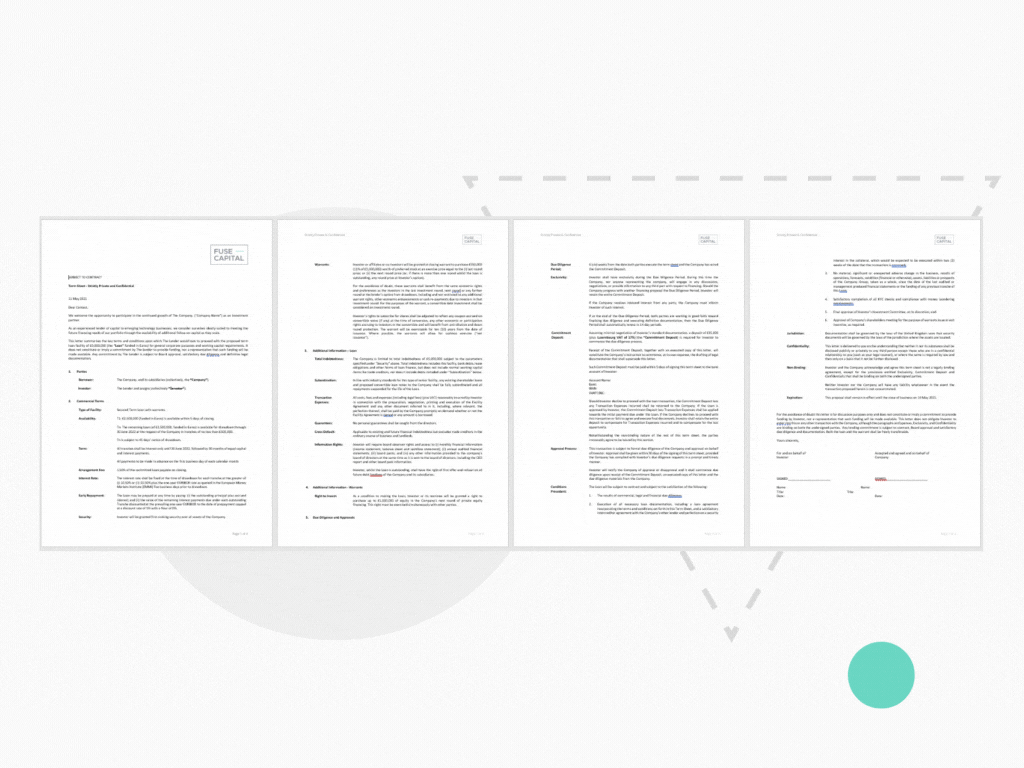Venture Debt
Entrepreneurship is one hell of a ride. You start off pumped and ready to change the world, but soon realize that the path is not as straightforward as you had imagined. As you scale from $10k to $100k, to $1m and then to $10m, there is always an endless list of new problems and issues that will keep you awake at night.
For instance, you may be grappling with whether your cash flow next month will be sufficient, whether you can hit your sales target and whether you can hit your milestones for the next fundraise.
At Fuse Capital, we can make your path easier with the use of venture debt. Venture debt has been around since the 1970s, but this powerful tool has been overlooked by many of your peers and competitors.
According to Silicon Valley Bank’s 2020 Tech Report, 74% of venture capital (VC) firms advocate bringing in venture debt as a compliment for equity to extend your runway. However, 42% of repeat founders responded that they did not know what venture debt was. They also admitted that they lacked understanding and confidence in the use of venture debt.
Venture Debt Experts
8 Years of Service
350+ Clients
200 Transactions
Why use Venture Debt
As the name suggests, venture debt is typically a form of debt financing designed to meet the scaling needs of fast growing companies. Venture debt offers many benefits beyond the use of equity while solving several pressing problems for businesses moving through this growth-stage.
Primarily, venture debt can be used to extend the cash runway and allow growth-stage startups more time to achieve progress ahead of the next valuation event. This runway extension also increases the certainty of reaching the milestones required. For instance, you can use the additional capital for M&A, for customer acquisition or for bridging purposes such as for a trade sale or IPO.
As such, not only will your company achieve a higher valuation, you will also be able to minimize dilution with the use of debt instead of equity. Further, venture debt can be secured very quickly and does not require creating board/advisory seats, thus saving valuable time and energy for the management team.
For a more in-depth look of this asset class, check out the articles i) difference between equity and venture venture debt and ii) difference between venture capital and venture debt
When to use Venture Debt
For most entrepreneurs, the ideal time to use venture debt is when you need incremental capital to accelerate growth (e.g. via M&A, customer acquisition equipment purchase, bridging to an event such as a trade sale or IPO, etc), but without the equity dilution, or when the capital needed is too small for an equity round.
However, venture debt should be carefully considered as a financing of last resort as the weaker your position, the worse the terms. Also, venture debt may not be the best structure in this scenario and other types of private debt could be better suited.
How Fuse Capital can help you
Since 2013, Fuse Capital, has supported trailblazing growth-stage startups and founders with loans of GBP 2-25m. In particular, we look for fast-growing companies with a proven product or service that are scalable for our private debt programs.
Do note that although venture debt brings significant benefits when used correctly it is not for everyone. This is because there are potential pitfalls that can cause more harm than good, such as a loan recall by lenders when you need it the most.
Besides helping you secure capital, we will also help you navigate these different minefields. Most importantly, we will help you structure a loan that best fits your scaling needs. For instance, these are some pertinent considerations when considering a loan:
| Factor | Implication |
| Warrants vs no warrants | Warrants can provide cheaper financing in the short term but become more expensive if exercised in the future |
| Covenants vs no covenants | You may be able to secure cheaper financing with covenants attached, but this is risky for early-stage companies or if your cash conversion cycle is long. This is because there is a risk of your loan getting recalled right when you need it the most (i.e. low cash levels). |
| No repayments vs full repayments | For a loan that is paid fully at the end, the financial pressure will be light in the short term, but heavy at the end. This may be tough for a young company and may complicate equity raising later. |
| Short term vs long term | The length of a loan will be highly dependent on your business model. The longer a loan, the higher the interest rates, as a lender will be taking on greater duration risk. |
| Cheaper and less flexible vs Expensive and more flexible | Flexibility can come in many forms, such as being able to tap on the credit as and when needed. Although more expensive, this will be helpful if your cash flows are highly variable or seasonal. |
| Global vs local lender | Global lenders may be able to access cheaper cost of capital and provider cheaper loans. However, they may not understand your business as well as a local lender or have as close a relationship, nor provide the optimal structure and flexibility that you need. |
For a more in-depth look on how the process work and to see a sample venture debt term sheet, check out this link on how venture debt financing work.
The next step
Since 2013, we have delivered $100m amount of loans to game-changing startups backed by the likes of Google Ventures, Softbank and Atomico amongst many others legendary venture capital firms, accelerators and incubators.
-
1
Transaction
You are ready to take debt. We’ll create your debt presentation to take to funding partners
-
2
Action
We generate a deal flow with our funding partners. You are delivered debt offers to review and accept or reject
-
3
Deal
We get the deal done. You draw down your debt solution.





.jpg?length=350&name=Simple-stream-Venture-debt-Case-Study-Fuse-Capital%20(1).jpg)


